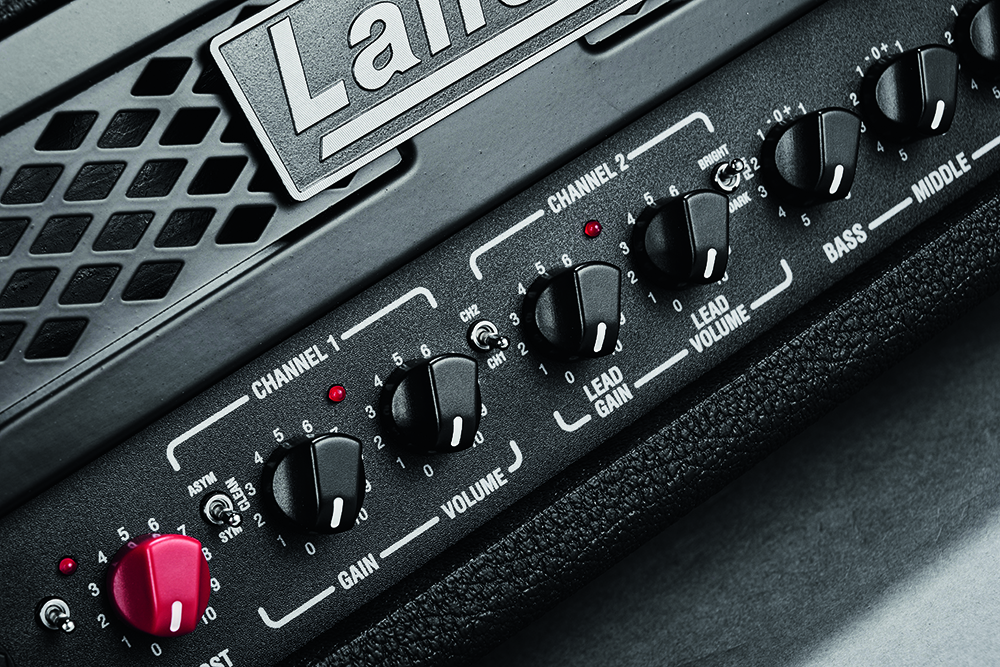
Many of us put considerable effort into perfecting our tone, often spending hours carefully dialling in our guitar amps. But things can go pear-shaped when we venture beyond the bedroom or rehearsal studio. Tight lows begin to boom, sweet treble becomes shrill, and there’s way too much reverb. Or maybe you can’t hear yourself properly in the mix.
Maybe you put a strip of masking tape across the top of your amp’s control panel with all your settings carefully marked, so could it really be your fault? Unfortunately, this is what happens when perfectly honed tone butts up against unfavourable room acoustics.
There’s no point in digging your heels in because no venue is going to summon a team of acoustic engineers to revoice the room just for you. You’re going to have to deal with it yourself – and the good news is that you probably already have the tools at your disposal.
Over the early decades of guitar amplification, players would have been lucky to have a single tone control for rolling off treble. But Leo Fender, who was always open to user feedback, began manufacturing amplifiers with more extensive tone-shaping controls during the mid-1950s.
Bass, middle, treble and presence controls soon became the industry standard for professional-grade amps, and other companies followed suit. You may think that multiple tone controls were introduced to make amps more versatile – which they do – but it was actually done to make them more consistent.

The accepted term is ‘equalization’ and therein lies the clue. These controls enable you to retain your preferred tone, or something close to it, in a range of acoustic environments. We decided to ask British blues ace Aynsley Lister for some real-world advice.
“Guitarists usually have a sound they’re used to hearing, but keeping the same control settings doesn’t mean it will always sound the same,” he observes. “You have to go by the way the room sounds and through experience you’ll learn what to expect in certain types of rooms.
“For instance, if a room is made of stone or glass, and there are no soft furnishings, your amp will sound louder than it does at home,” he continues.
“The midrange and high frequencies are going to sound harsher and more unforgiving, so you might need to knock your mid and treble controls back. With lots of soft furnishings, like a pub gig, your rig may seem quieter because they’ll soak up a lot of the sound and you won’t hear as many reflections. In a room with lots of hard surfaces, you’ll hear a lot of reflected sound as well as the direct sound coming from the amp.”
Home and away
Since you can’t expect your home tone to translate to every gigging scenario, Aynsley offers some thoughts on how typical amp settings might differ.
“The classic thing when people play alone at home is to turn the bass and mids up to make everything sound full and warm,” Aynsley suggests. “But if you use those settings with a band, the guitar is going to get lost. I think a crucial part of getting a guitar sound is tuning in the midrange. If you don’t have enough, you’re not going to cut through a mix – but too much will sound very up front and a bit brutal.”

Volume levels also play a part and should one of your considerations because our perceptions of bass and treble response differ along with changes in level, and valve amps need to be turned up sufficiently to hit their sweet spot. But that also presents problems.
“Your amp’s sweet spot may be too much in a small room with lots of hard surfaces,” says Aynsley. “If it seems uncomfortably loud, the amp will sound better if you turn it down and use pedals to make up for the loss of gain and maybe compression. The amount of natural reverb in a room can also affect the reverb setting on an amp.
“But remember that most soundchecks are done in empty rooms, and with a crowd of people in there the sound will generally become tighter and you’ll lose a bit of the liveliness. I might turn the reverb up.”
Aynsley is constantly gigging, and so he has developed a routine for setting up his amp: “I always dial in my tone using a Strat because that’s the main guitar I play, and I have the same lick that I will play over and over again. It’s almost a ritual that I go through. I just try to make it balanced, so I’ll select the neck pickup and hit the bottom E string. If it sounds too woofy or overblown, I’ll cut the bass. That gives me the limit of low-end.
I always dial in my tone using a Strat because that’s the main guitar I play, and I have the same lick that I will play over and over again
Aynsley Lister
“For the high-end I’ll go to the bridge pickup, and if it’s too shrill then I’ll cut the treble. For the midrange, I just sweep the control around until I find the sweet spot. It’s all about using your ears. And because I run two amps, I’ll set each amp individually. But with both amps running, they shift more air, so they produce more low-end and I sometimes have to turn down the bass controls a bit further.
“On smaller stages you may be forced to place the amp close to a wall or in a corner and that increases the low-end. Some players like to place amps on stands or tilt them backwards to control the bass, but I prefer mine on the floor.
“Another thing I like to do,” Aynsley continues, “is go and listen where the audience will be standing. On stage, the amp is hitting the back of your legs, so you might turn the treble up. But for the people standing directly in front of the amp, their faces will be melting from too much volume and treble. If so, you should try angling the amp away from the audience.”







